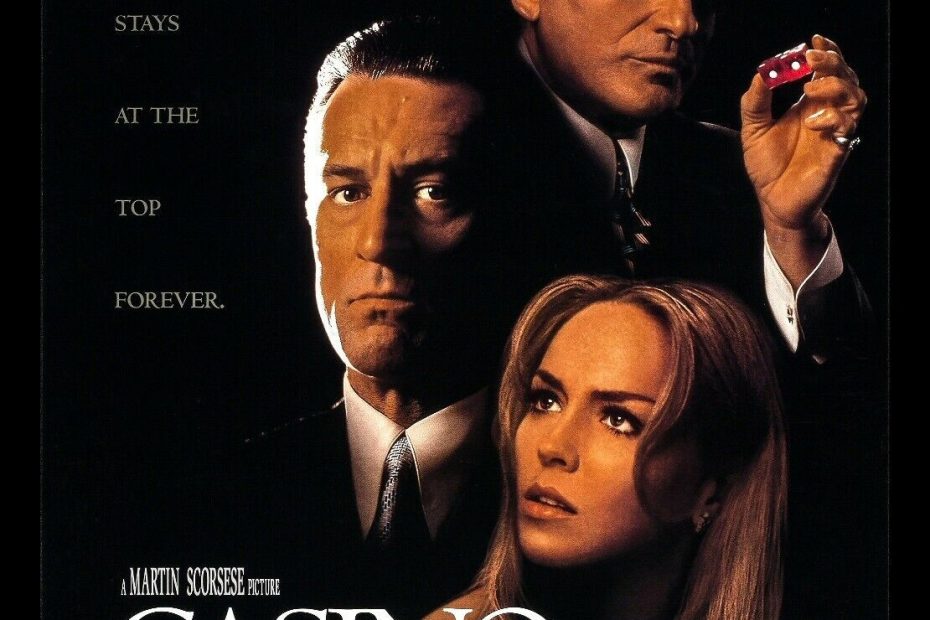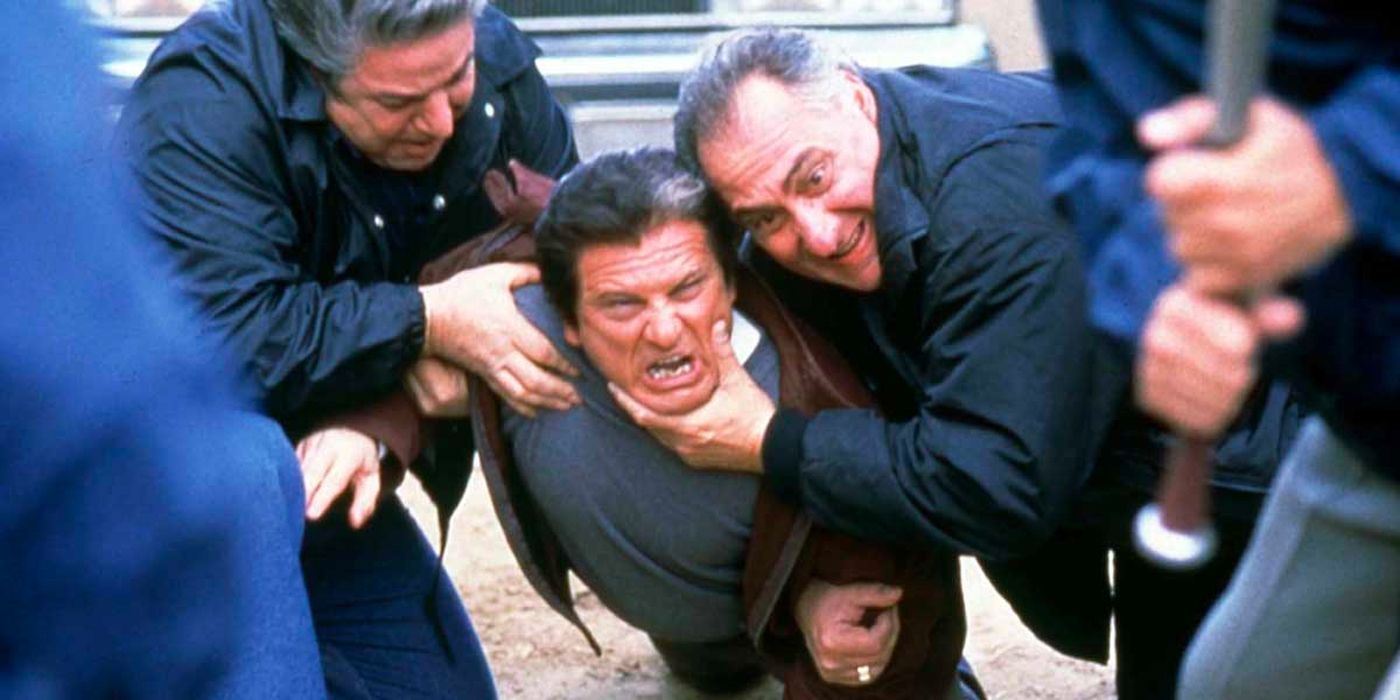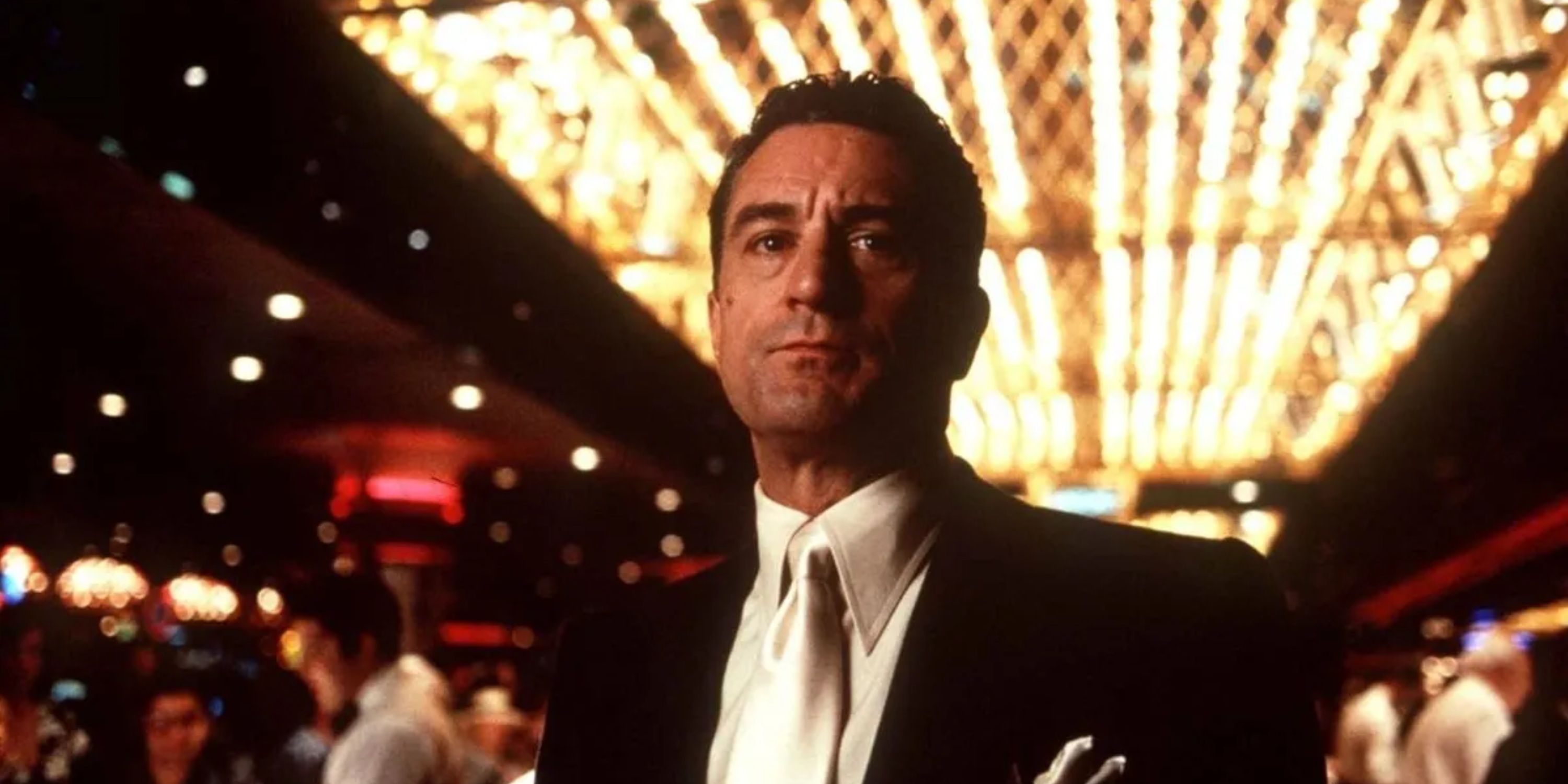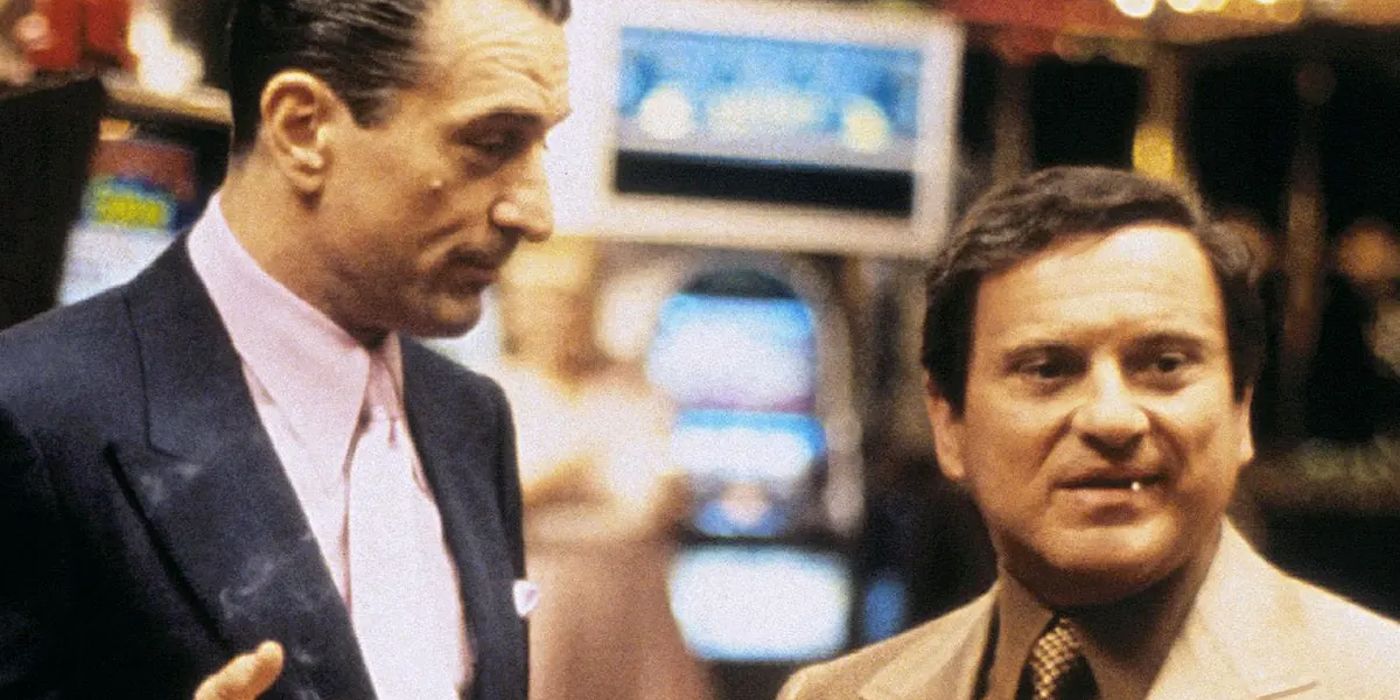The Big Picture
- Joe Pesci’s performance as Nicky Santoro in
Casino
was inspired by real-life mobster, Anthony Spilotro. - Anton Spilotro’s violent behavior served as the basis for
Casino
‘s brutal scenes, leaving a lasting impact on the film. - Martin Scorsese and Pesci depicted an accurate but condensed portrayal of Spilotro’s criminal career in
Casino
highlighting his brutal end.
Martin Scorsese has made many brilliant contributions to film, but the Killers of the Flower Moon and Taxi Driver director is perhaps best known for giving audiences extremely memorable characters. Veteran actor Joe Pescithrough his decades-long collaboration with Martin Scorsese, has played many of them, beginning with Joey LaMotta in Raging Bulland continuing through with his Oscar-nominated performance as Russell Bufalino in The Irishman. Pesci’s best performance, however, is Nicky Santoro in Casino. Arguably a spiritual successor to Scorsese’s Goodfellas in terms of narrative, characters, and thematic undertones, this 1995 crime-drama gave Pesci yet another opportunity to chew the scenery as an intimidating, violent, and downright nasty mafia henchman whose erratic behavior ultimately brought him to a grisly end. But who was the real-life counterpart that inspired Pesci’s character?
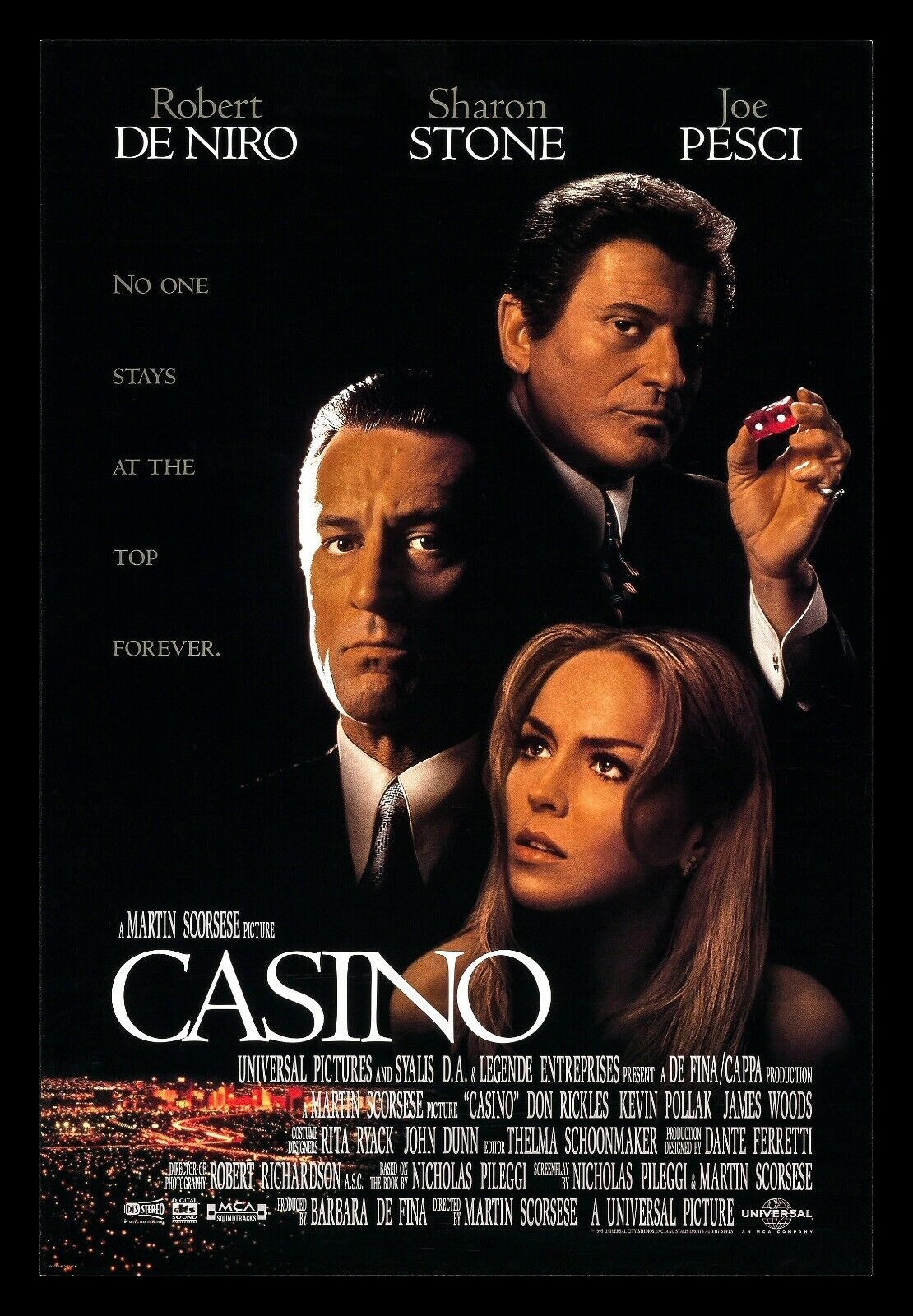
Casino
In Las Vegas, two best friends — a casino executive and a mafia enforcer — compete for a gambling empire and a fast-living, fast-loving socialite.
- Release Date
- November 22, 1995
- Runtime
- 178
‘Casino’s Nicky Santoro Is Based on Anthony “The Ant” Spilotro
Anthony John Spilotro was born in Chicago on May 19, 1938, to Italian immigrants Pasquale and Antoinette. As one of six boys, he was exposed to the world of organized crime at an early age through his parents’ business, Patsy’s Restaurant. The local eatery was a popular hangout for members of the Chicago mafia, and it was common for Anthony and his brothers to rub elbows with some of the city’s most fierce and dangerous “made” men. Naturally, it wouldn’t take long for Spilotro to cultivate a reputation as an aggressive and mischievous youngster with a penchant for getting into trouble with the law.
After losing his father and dropping out of high school at age 16, Anthony was first arrested for attempted theft. Undeterred by the consequences of his criminal activity, he began upping the ante into his 20s and befriended several prominent mobsters in Chicago. Eventually crossing paths with Sam “Mad Sam” DeStefanoa particularly violent and unpredictable soldier in the criminal underworld, Spilotro found a mentor of sorts and would soon graduate to the big leagues of organized crime.
‘Casino’s Gnarly Violence Is Inspired by Real Events
In the 1960s, the neighborhood of Elmwood Park was home to several high-profile members of the Chicago outfit, and therefore considered off-limits for criminal activity. Two 24-year-old men, however, either weren’t privy to this knowledge or simply didn’t care. After killing two people in the neighborhood, Billy McCarthy and Jimmy Miraglia (dubbed the “M&M Boys”) placed themselves directly in the cross-hairs of powerful mobsters who wanted to send a message to would-be troublemakers. It was decided that Anthony Spilotro was the man for such an assignment.
In an early display of the brutal methods he’d become known for in Las Vegas, Spilotro tortured McCarthy and Miraglia before murdering them. As is depicted in Casinoalthough in a different context, he went as far as placing McCarthy’s head in a vice and squeezing it until his eye popped out of its socket. Sadistic as they were, Spilotro’s efforts didn’t go unnoticed. In 1963, he became a “made” man and began overseeing bookmaking operations in the northwest portion of Chicago. While he was rising in the outfit’s ranks, the 25-year-old also garnered a reputation with the city’s law enforcement and, due to his 5’2″ stature, Spilotro was given the nickname “The Ant” by local media.
Robert De Niro’s ‘Casino’ Character Is Also Based on a Real Person
The remainder of the ’60s saw Anthony Spilotro avoid imprisonment several times. Having attracted more attention with his suspected involvement in a series of murders, as well as illegal gambling and racketeering, the mobster was often penalized with fines but ultimately served no jail time. Figuring his good luck was bound to run out, he left Chicago and headed to Las Vegas on assignment to assist with casino operations for the outfit. In 1971, he arrived in Sin City and began working alongside his friend, Frank “Lefty” Rosenthal (the basis for Robert De Niro‘s Sam “Ace” Rothstein in Scorsese’s film), who had recently been tapped to oversee the crime syndicate’s activity within the Stardust Hotel and Casino (The Tangiers in Casino).
After assuming the alias “Tony Stuart,” Spilotro went to work protecting Rosenthal and the Chicago outfit’s embezzlement of casino profits. As could be expected considering the ant’s erratic and unpredictable behavior, his presence in Las Vegas correlated with an increase in violent crime. He wasted no time in extorting local criminals and organizations, and it wouldn’t be long before his uncontrollable antics put an unwanted spotlight on the mob’s criminal exploits and complicated their overall ability to conduct business. Slowly but surely, Spilotro would go from reliable henchman to thorny liability.
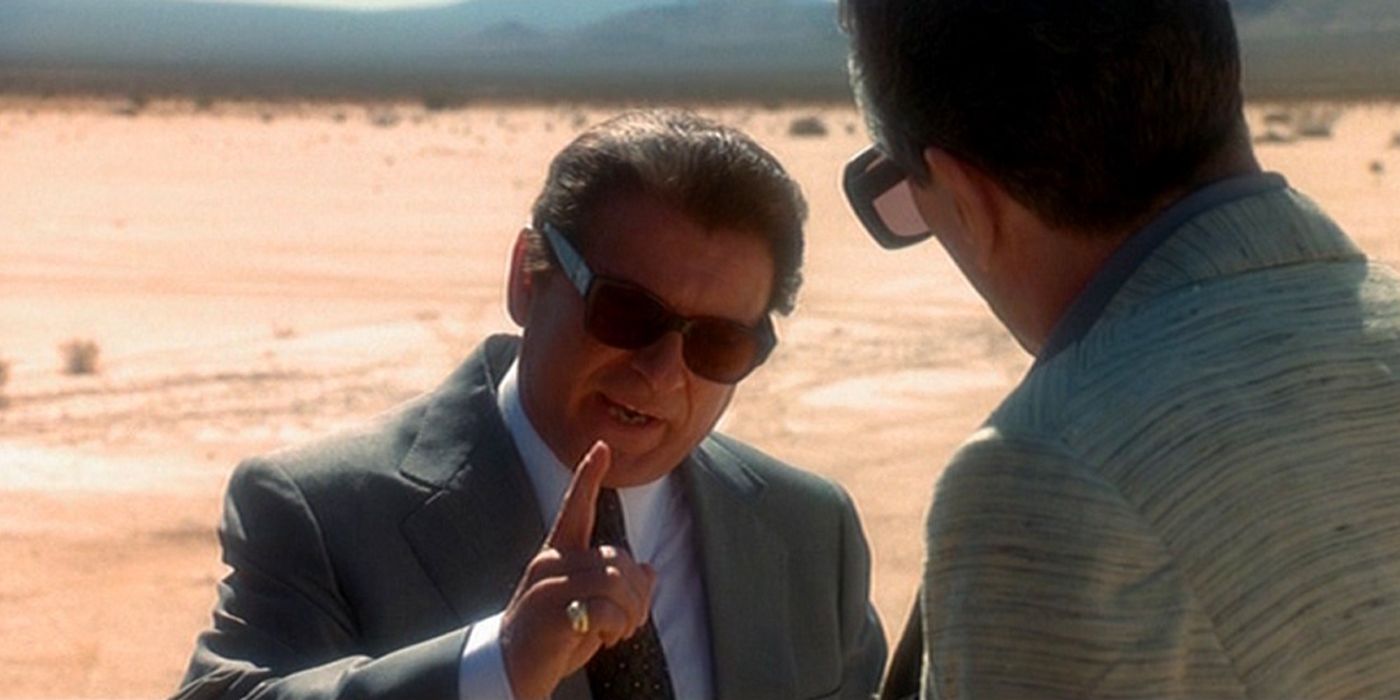
Robert De Niro Saved Martin Scorsese’s Life by Demanding He Make This Movie
The ‘Killers of the Flower Moon’ director was granted another round in the ring by his most famous collaborator.
In 1976, partnering with his brother MichaelAnthony Spilotro opened The Gold Rush. Located just one block from The Strip, the brothers specialized in selling stolen jewelry and electronics, and it was out of The Gold Rush that the ant oversaw a cohort of burglars. In reference to one of their heist techniques, in which they drilled a hole into a wall or roof to gain access to a particularly difficult target, they dubbed themselves the “Hole in the Wall” gang. Tasked with lifting the goods from local homes, businesses, and hotel rooms, the team worked efficiently and covertly enough to avoid prosecution from a watchful FBI, although the attention they drew became increasingly problematic for the powers that be.
Anthony Spilotro’s Behavior Went Too Far
By 1979, Spilotro’s impulsive and reckless behavior had simply become too much to manage. After one of his associates, Sherwin “Jerry” Lisnerwas apprehended by the FBI and intended to testify in court, Anthony and another mobster took it upon themselves to kill Lisner without approval from the Chicago outfit. Later that year, the ant found himself blacklisted by the Nevada Gaming Commission, effectively barring him from entering any casino in the state. To add insult to injury, Spilotro entered into an affair with Frank Rosenthal’s wife, Back.
The walls were closing in on the 5’2″ brute from Chicago, and the nail in the coffin arguably came in the form of a botched burglary on July 4, 1981. Spilotro’s gang attempted to rob a business they predicted would yield $1 million in merchandise. But a member of the gang, Sal Romanoinformed the crew, and all six participants were arrested and charged with multiple felonies. In addition, one of the arrested men, Frank Cullottawas persuaded to become an informant himself after discovering that Spilotro put a bounty on his head.
In 1986, the “bosses back home” decided the future of their Las Vegas enforcer. Though the details surrounding the deaths of Anthony and Michael Spilotro remained largely unknown for years, testimony in a 2007 trial shed new light on their final moments.According to mobster-turned-informant Nicholas Calabresethe brothers traveled to a meeting in Illinois under the presumption they’d receive promotions within their syndicate. But in reality, the Spilotros were unknowingly walking into the lion’s den. As part of a crew of up to 10 men, Calabrese witnessed the brutal beating and murder of Anthony and Michael Spilotro in a basement. According to the informant, upon realizing that his fate was sealed, Anthony asked the men in the room, “Can I say a prayer?” It was July 14, 1986, and after the brothers’ demise, their bodies were dumped in a cornfield in Enos, Indiana.
Martin Scorsese and Joe Pesci’s Iconic ‘Casino’ Scene
A classic rise-and-fall gangster epic, and one of Martin Scorsese’s crowning achievements, Casino provides a showcase for Anthony Spilotro’s criminal exploits via Pesci’s powerhouse performance. Much like the actor’s characterization of Tommy DeVito in GoodfellasNicky Santoro is the personification of unshakable pride coupled with greed and vice, a man who lived and operated in defiance of forces greater than him. Metaphorically, the man charged with aiding and enforcing the mob’s grasp on Las Vegas overplayed his hand and paid the ultimate price.
Though Tommy’s murder in Goodfellas is certainly violent and unexpected, it arguably pales in comparison to Nicky’s disturbing demise in Casingo. He and his brother aren’t given a quick death with a gunshot to the head, but rather find themselves viciously beaten by men with aluminum bats before being buried alive. Nicky is forced to watch as Frank and other associates repeatedly beat his brother, giving the mob soldier plenty of agonizing time to contemplate the same fate inevitably awaiting him. It’s one of the most truly shocking moments in Scorsese’s body of work, made all the more impactful considering he’s a filmmaker who’s never shied away from graphic depictions of violence.
How Accurate Is ‘Casino’s Portrayal of Anthony Spilotro?
While Casino‘s treatment of Anthony Spilotro via Joe Pesci as Nicky Santoro is largely faithful to history, it remains a relatively mixed bag of fact and dramatization. Rather than setting the character’s brutal demise in an Illinois basement, Scorsese and co-writer Nicholas Pileggi opted for an arguably more disturbing scenario by setting the incident in the seeming tranquility of a cornfield in broad daylight. Another disconnect between reality and fiction is the age difference between Pesci and Spilotro, with the former in his fifties when he appeared in Casino and the latter in his thirties and early forties during his heyday in Las Vegas. And for the obvious sake of condensing and compositing historical events for the sake of time, Casino omits many anecdotal bits of Spilotro’s criminal history. But petty grievances over trivial matters aside, Scorsese’s adapted screenplay and Pesci’s chilling performance paint an accurate portrait of a ruthlessly violent man and capture the essence of his sinister spirit.
Casino is available to watch on Peacock in the U.S.
